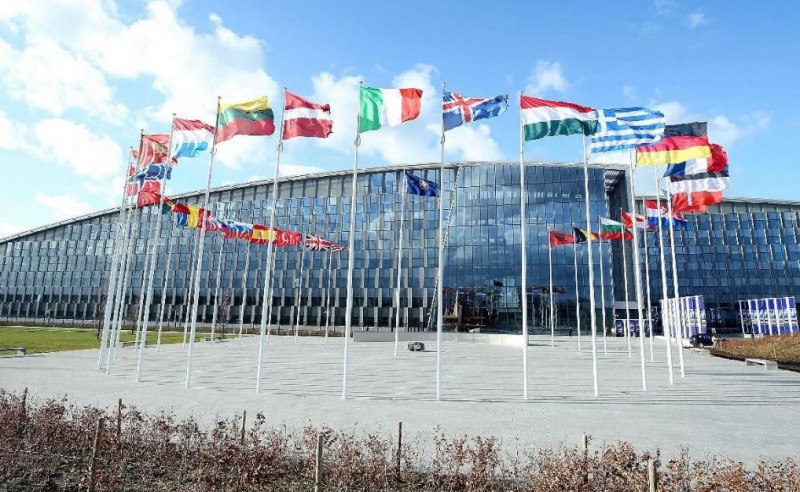
In a world where security challenges transcend borders, the need for collective security has become paramount. The North Atlantic Treaty Organization, commonly known as NATO, stands as a beacon of cooperation and defense among member states. Established in 1949, NATO has evolved into a robust alliance safeguarding its members' interests and promoting peace and stability globally.
What is NATO?
The Establishment of NATO
NATO was born out of the aftermath of World War II, during a time of heightened geopolitical tensions. On April 4, 1949, twelve founding members signed the North Atlantic Treaty in Washington, D.C. The primary objective was to counter the threat of the Soviet Union and prevent further aggression in Europe.
NATO's Core Principles
NATO is built on the foundation of collective defense, enshrined in Article 5 of the North Atlantic Treaty. This principle states that an attack on one member is an attack on all, and all members must respond collectively to restore peace and security. Additionally, NATO emphasizes diplomatic efforts to prevent conflicts and promote cooperation.
NATO's Organizational Structure
To effectively address security challenges and maintain operational efficiency, NATO operates through various organizational bodies:
The North Atlantic Council (NAC)
The NAC is NATO's highest decision-making body, consisting of ambassadors from each member country. It provides strategic guidance and oversees the alliance's operations.
The Military Committee (MC)
The MC is composed of the military representatives of NATO member states. It advises the NAC on military matters and ensures the coordination of military activities.
Allied Command Operations (ACO)
ACO is responsible for planning and conducting NATO's military operations and missions, ensuring the collective defense of member states.
Allied Command Transformation (ACT)
ACT focuses on developing NATO's capabilities and ensuring its forces are prepared to address emerging security challenges effectively.
Ensuring Collective Security
Collective Defense and Article 5
One of NATO's primary functions is collective defense, which is the cornerstone of the alliance. Article 5 of the North Atlantic Treaty states that an armed attack against one or more members shall be considered an attack against all members, triggering a collective response.
Crisis Management and Conflict Resolution
NATO actively engages in crisis management and conflict resolution efforts. Through diplomatic and military means, the alliance seeks to de-escalate tensions and resolve conflicts peacefully.
Cooperative Security and Partnerships
NATO cooperates with non-member countries and international organizations to foster stability and security. Partnerships for Peace (PfP) and other cooperative arrangements enhance dialogue and collaboration with partner nations.
NATO's Role in Modern Security Challenges
Cybersecurity and Hybrid Warfare
In the digital age, cybersecurity has emerged as a critical concern. NATO works to bolster member states' cyber defenses and counter hybrid warfare tactics that blend conventional and unconventional means.
Terrorism and Counter-Terrorism
NATO remains vigilant against the threat of terrorism. It conducts counter-terrorism operations and collaborates with partner nations to disrupt terrorist networks.
Disinformation and Influence Operations
With the rise of disinformation and influence operations, NATO actively combats the spread of false information that can destabilize democracies and harm collective security.
Evolution and Enlargement of NATO
NATO's Enlargement Process
Since its inception, NATO has undergone expansion, welcoming new member states that share its principles and objectives. The enlargement process is subject to rigorous criteria and geopolitical considerations.
Controversies and Concerns
NATO's enlargement has sparked debates and concerns, particularly regarding potential security implications and strain on diplomatic relations with non-member countries.
NATO's Relationship with Other International Organizations
United Nations (UN)
NATO maintains close ties with the United Nations and collaborates on peacekeeping missions and crisis management efforts.
European Union (EU)
NATO and the EU share common security interests, and their partnership aims to enhance defense capabilities and tackle shared challenges.
Partnership for Peace (PfP) and Other Partnerships
Through initiatives like PfP, NATO engages with partner countries to promote stability and address security issues beyond its borders.
NATO's Future Challenges and Adaptations
Rising Power Competition
As power dynamics shift globally, NATO faces challenges in navigating relations with rising powers and safeguarding its collective interests.
Technological Advancements
The rapid pace of technological advancements presents both opportunities and challenges for NATO's defense capabilities.
Climate Change and Environmental Security
Environmental factors, such as climate change, can have profound implications on global security. NATO addresses these concerns and explores ways to mitigate risks.
NATO's unwavering commitment to collective security has stood the test of time. Through cooperation, deterrence, and crisis management, the alliance continues to play a vital role in ensuring peace and stability among member states. As the world evolves, NATO remains adaptable, striving to address emerging security challenges while upholding its core principles.
World Trade Organization (WTO): Facilitating International Trade and Resolving Trade Disputes
World Bank Group: Supporting Developing Nations with Financial and Technical Assistance
World Health Organization (WHO): Addressing Global Health Challenges and Pandemics